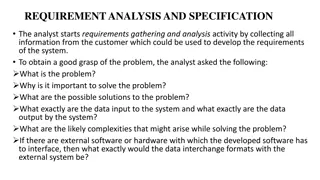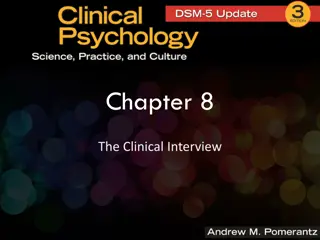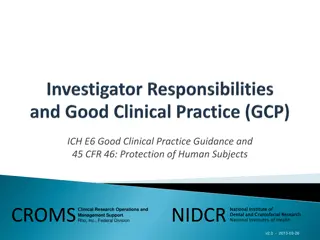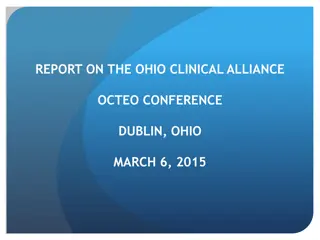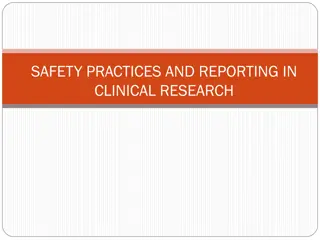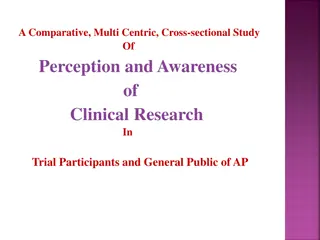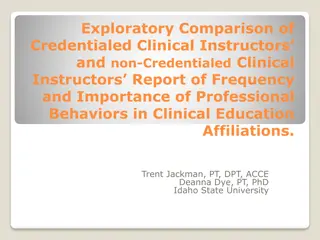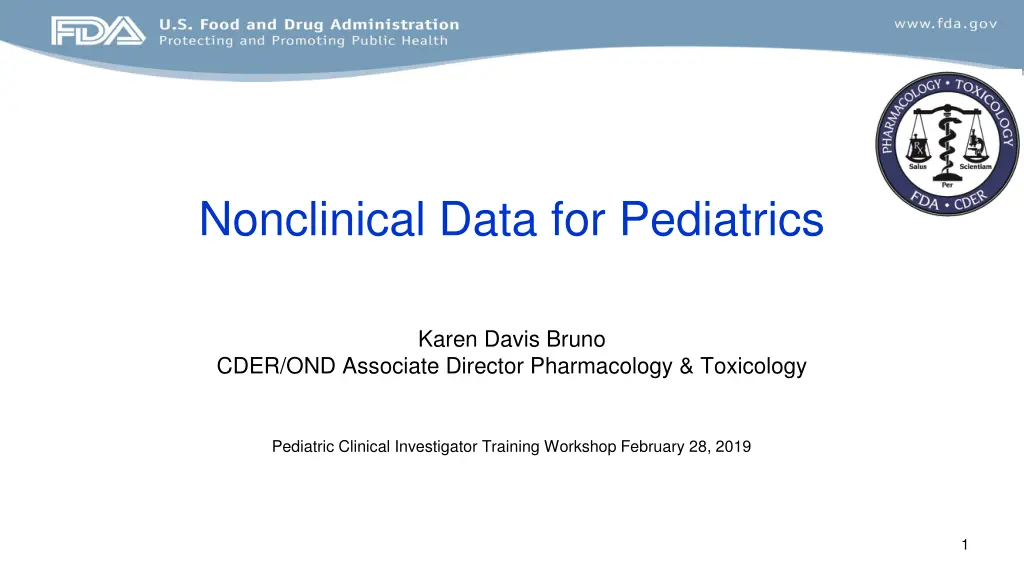
Nonclinical Data for Pediatrics: Supporting First-in-Human Studies
Adequate nonclinical studies are essential for supporting first-in-human trials in pediatric populations, providing insights into mechanism of action, dose-response relationships, and systemic exposure effects. Juvenile animal studies bridge safety data gaps for pediatric patients, addressing developmental differences and ensuring ethical trials with reversible adverse events.
Download Presentation

Please find below an Image/Link to download the presentation.
The content on the website is provided AS IS for your information and personal use only. It may not be sold, licensed, or shared on other websites without obtaining consent from the author. If you encounter any issues during the download, it is possible that the publisher has removed the file from their server.
You are allowed to download the files provided on this website for personal or commercial use, subject to the condition that they are used lawfully. All files are the property of their respective owners.
The content on the website is provided AS IS for your information and personal use only. It may not be sold, licensed, or shared on other websites without obtaining consent from the author.
E N D
Presentation Transcript
Nonclinical Data for Pediatrics Karen Davis Bruno CDER/OND Associate Director Pharmacology & Toxicology Pediatric Clinical Investigator Training Workshop February 28, 2019 1
Adequate Nonclinical studies support FIH & Provide: Understanding of MOA Establish exposure (dose) response relationship Relationship to duration & extent of systemic exposure Identification of target organs & characterization of toxic effects Assess potential reversibility of toxic effects Extrapolate to potential human risk Estimate safe starting dose/regimen, route for trials including FIH Identify parameters for clinical safety monitoring & guide patient eligibility Assist in management of risk 2
Supportive Nonclinical Studies Pharmacology/Safety pharmacology Repeat dose toxicity (rodent, non-rodent) Test species based on human PD/PK similarity Genotoxicity (in vitro, in vivo) Carcinogenicity Developmental & Reproductive (DART) Fertility Embryo-fetal developmental Pre-/Post-natal development -Juvenile animal study (JAS) 3
JAS: Bridging the Data Gap Direct Dosing Juvenile animal studies Repro Seg III Repeat dose studies Birth Weaning PND 21 Adult ~PND60 Indirect exposure 4
Why Juvenile Animal Studies (JAS)? Address pediatric safety concerns not addressed by clinical or standard tox due to developmental differences compared to adults Assess safety concerns cannot be studied in peds trials Adequate/Safe/Ethical trials- irreversible AE Provide info for adequate clinical monitoring Provide prospect of efficacy (POC) JAS are considered on a case-by-case basis Scientific justification should support the need for JAS 5
Application of the WoE approach in JAS in ICH S11: Nonclinical Safety Testing in Support of Development of Pediatric Medicines 6
JAS Linaclotide (Linzess) MOA: 14aa guanylate cyclase-C agonist, acts locally on the luminal surface of the intestinal epithelium. Activation of GC-C results in an increase in both intracellular and extracellular concentrations of cyclic guanosine monophosphate (cGMP). Elevation in intracellular cGMP stimulates secretion of chloride and bicarbonate into the intestinal lumen, mainly through activation of the cystic fibrosis transmembrane conductance regulator (CFTR) ion channel, resulting in increased intestinal fluid and accelerated transit. NME for IBS-C 290 mcg orally once daily (5 mcg/kg/day) & for CIC 145 mcg orally once daily (2.4 mcg/kg/day) JAS requested based on indication in relatively young pediatric population (< 4 years of age) Resulted in mortality in neonatal mice on PND 7, 14, and 21, although the lethal dose increased with age. Well tolerated when dosing began on PND 35. Mortality due to severe dehydration as a result of increased fluid secretion into the intestinal lumen. Subsequently determined that severe dehydration corresponds to increased intestinal expression of GC-C in neonatal mice, which decreases with age. From the label: LINZESS is contraindicated in patients less than 6 years of age; in neonatal mice, linaclotide caused deaths due to dehydration. Avoid use of LINZESS in patients 6 years to less than 18 years of age. The Division required a study to measure GC-C mRNA levels in duodenal and colonic tissue obtained from children ages 0 to 6 years of age to inform the potential risk of linaclotide administration in this pediatric population. 7
JAS: CDERs Experience An internal CDER archival data base (DARRTS) was searched for Agency/Applicant correspondence & reviews between 2009 and 2016 related to the conduct of JAS in support of pediatric clinical trials. All JAS-related documents were then retrieved and relevant information was used to populate an excel database. The following key criteria were captured: Study required or not required including rationale Study completed or not completed Study design characteristics when available (e.g. species, age, endpoints) including rationale JAS results Regulatory impact We asked the following questions: 1. What is the rationale when a JAS is performed or not needed? 2. What are the common JAS design elements? 3. Do JAS show unique safety signals? 4. If so, what design elements had the biggest impact? 5. What impacts does JAS data have on the regulatory decision making process? 8
CDERs JAS Database Results 85% JAS have toxicity findings (110/130) 76%JAS with toxicity findings identified a new toxicity or increased sensitivity relative to adult toxicology studies (84/110) In 76% of these studies a toxicity not identified in adult nonclinical toxicology studies was observed (64/84). New toxicities (43) were identified from endpoints not routinely captured in adult studies and/or specific to the developing animal (e.g. bone, growth, learning and memory) 37 JAS w/new tox findings & PPND data- no correlation (59%; 22/37) 59 JAS w/new tox findings & pharmacology data- correlation (68%; 40/59) In 24% of these studies an increased sensitivity (same toxicity observed at a lower dose) was observed (20 out of 84) Exposure data from JAS were adult animal exposure in (69%) toxicity studies Suggests that increased drug exposure in the JAS does not explain the identification of a new toxicity 9
JAS: CDERs Experience Regulatory Impact Unacceptable Risk To Pediatric Subjects Impact Toxicity Refusal to Issue WR 6-Fold Reduction in MTD Cardiomyopathy/Mortality Full Waiver From Studies In Subjects < 18 Years of Age Bone growth plate toxicity No Studies in Subjects < 1 Year of Age Spinal Cord Toxicity Peripheral Nerve Toxicity Skeletal Muscle Toxicity No Studies in Subjects < 2 Years of Age Urinary Bladder/Renal Toxicity No Studies in Subjects < 3 Years of Age Convulsions Mortality 10
JAS: CDERs Experience Negative Studies Endpoints Studies with Negative Findings 130 of the required studies were completed and reviewed 110 had toxicity findings (85%) 14 had no toxicity findings (11%) 6 were considered inadequate to assess toxicity due to design flaws (5%) Of the 14 studies with no toxicity findings the rationale to conduct the studies were: Unknown Risk n = 10 (57%) Target in Developmentally Sensitive System n = 2 (14%) Pediatric Population 6 n = 2 Total 14 General Toxicity 14 Neurobehavioral/ Neurological Developmental Landmarks Reproductive Development Bone Development 5 7 2 3 12
JAS: CDERs Experience Conclusions JAS provide value in that they are a tool to generate data bridging the gap between adult and pediatric subjects. JAS capable of identifying important new toxicities not previously identified in adult toxicity studies. Age of pediatric subjects (< 6 y.o.) to be studied is a major driver of JAS requests and design. Findings from adult nonclinical studies or the presence of the target in a developing organ/system are additional drivers of JAS requests and design. Increased sensitivity/unique toxicity cannot be explained by differences in TK. May be able to predict whether a study will be positive based on available data; however, cannot predict what the toxicity profile will be. New toxicities or increased sensitivity led to regulatory decisions 12
Acknowledgements PTCC Pediatric Subcommittee Co-chairs: Tim McGovern, Darren Fegley Jason Aungst Gerri Baer Federica Basso Carmen Booker Paul Brown Emily Place Olayinka Dina Peyton Myers Ed Fisher Andrew Goodwin Wafa Harrouk Elizabeth Hausner Belinda Hayes David Joseph Imran Khan April Kluever Grace Lee Ikram Elayan Parvaneh Espandiari Ravi Ravindran Melissa Tassinari Claudia Wrzesinski 13


